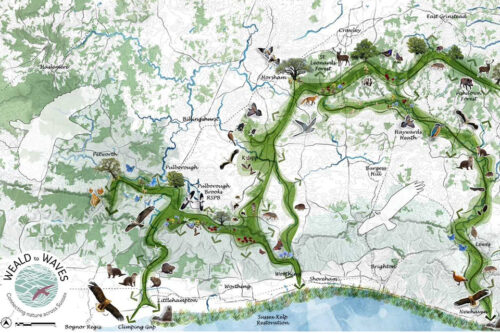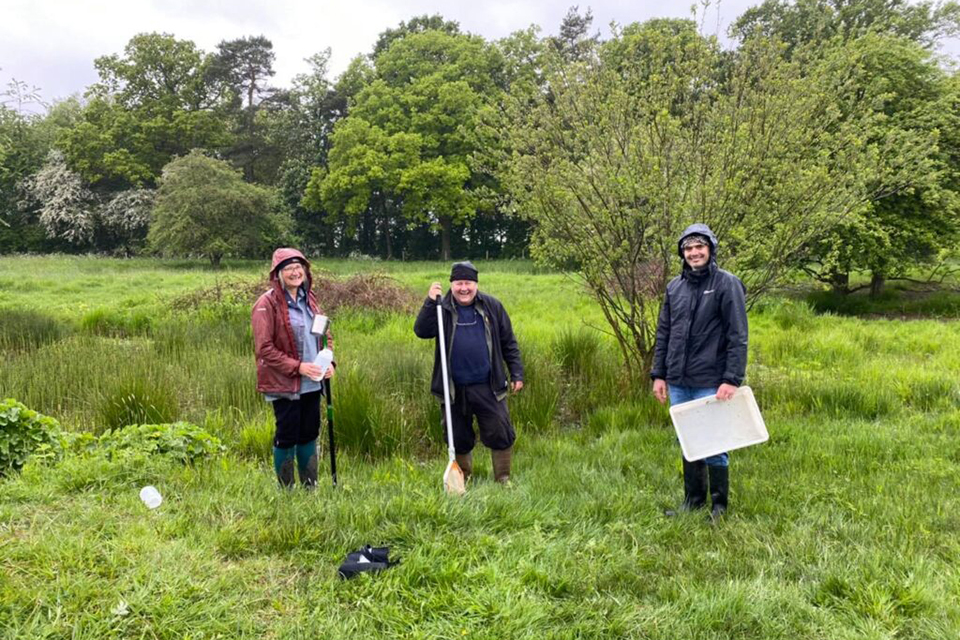This week, Rewilding Britain celebrated their astounding success. With 1000 members in their network, who are actively rewilding more than 120.000 ha of land and 50.000 ha seabed, the movement is gaining more and more momentum reaching its set targets at an earlier day than expected. The figures have been published to mark World Rewilding Day 2024.
Rewilding is all about setting nature free to further its own natural processes by reintroducing lost species, setting the hydrology free, and bringing back habitats, tells Rewilding Britain. While the science is clear, some farming communities are hesitant pointing out that it does not make sense to take land away from agricultural production. Experience shows, however, that local economy flourishes as rewilding produce free range food of high quality and at premium prices, crates jobs and boost local ecotourism. Basic food production should not take up as much land as hitherto. Instead, agritech, should take over, claims rewilder enthusiasts.
Accordingly, supporters are pleased that rewilding plays an official role in the British Government’s policy to reform farming subsidies making room for large-scale projects which might include rewilding. Also, the new policy requiring entrepreneurs to enhance the biodiversity on their building projects with 10% or pay a premium for local or national projects will involve rewilding projects carried out on more marginal lands.
A snapshot of 58 rewilded sites, show that one quarter are carried out as large projects, while the remaining three quarters are on public land often taking the character of community project and engaging local people in bettering their natural surroundings.
 Large projects included the Knepp Estate. Another large project in the north is Wilder Doddington at the Elizabethan manor Doddington Estate with more than 250.000 visitors enjoying glamping or shopping at the cafes. Launched as a 400-year project, the plan is to letting nature recover while letting people connect to nature and the sturdy Lincoln Red Cattle and the Hungarian Mangalitza pigs (so-called Wollen Pigs) which are charged with the mission to further the natural ecosystems.
Large projects included the Knepp Estate. Another large project in the north is Wilder Doddington at the Elizabethan manor Doddington Estate with more than 250.000 visitors enjoying glamping or shopping at the cafes. Launched as a 400-year project, the plan is to letting nature recover while letting people connect to nature and the sturdy Lincoln Red Cattle and the Hungarian Mangalitza pigs (so-called Wollen Pigs) which are charged with the mission to further the natural ecosystems.
However, Rewilding Britain is not just working on dry land. New important projects include the creation of the “Arran Seabed Trust”, establishing the first no-take zone in Lamlash Bay on the West Coast of Scotland. Another recent project supported by Rewilding Britain is the creation of a healthy marine ecosystem at Sussex Bay, an extensive seascape that encompasses 160 km. The project aims to restore kelp beds, oyster beds and saltmarsh and bringing together scientists and too local groups along the shore. The project links up to the Weald to Waves project aiming to connect the ancient High Weald landscape with the coast.
FEATURED PHOTO:
Isobel Wright, Graham Warnes and Luca Mao at Wilder Duddington © Duddington Estate
READ MORE:
